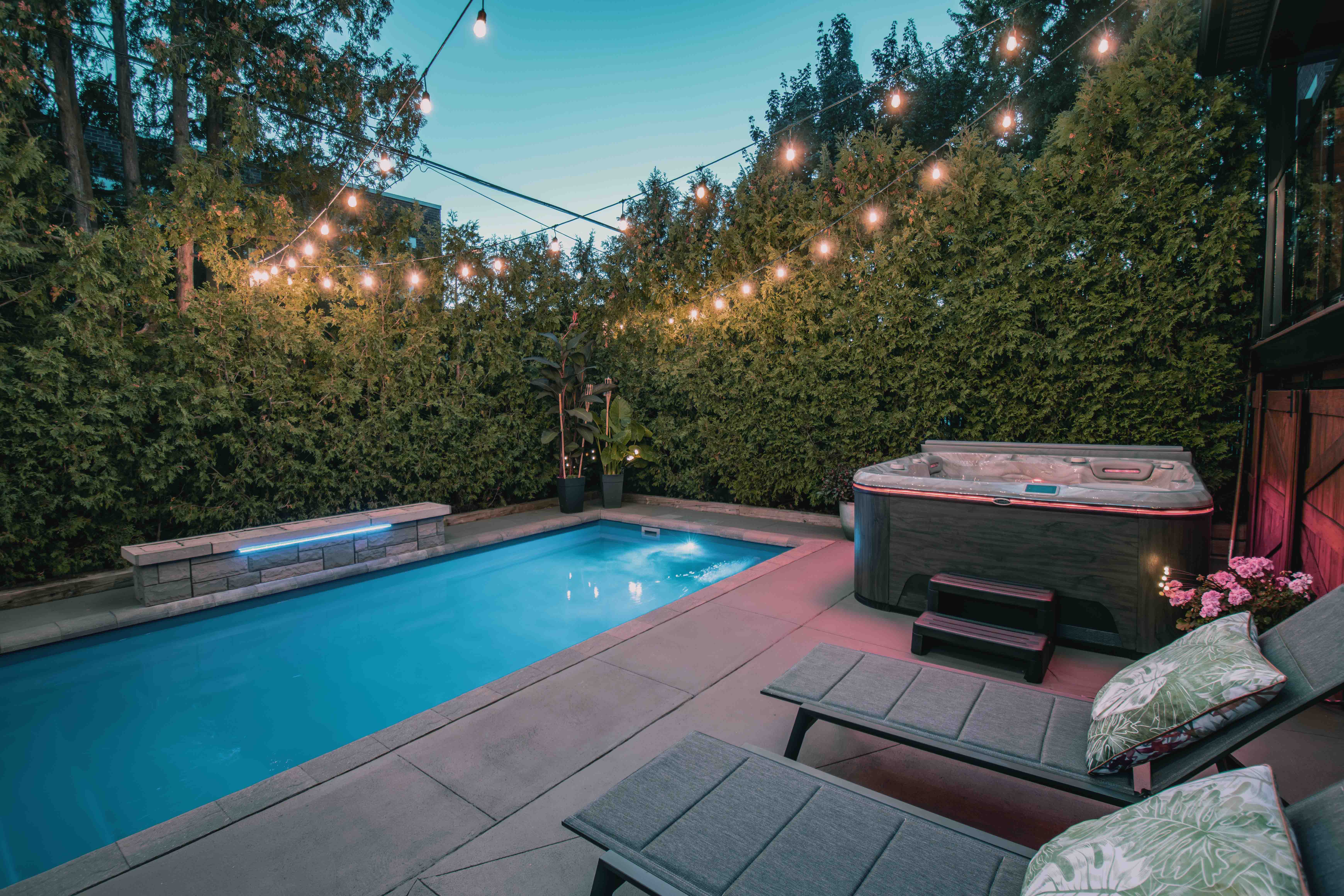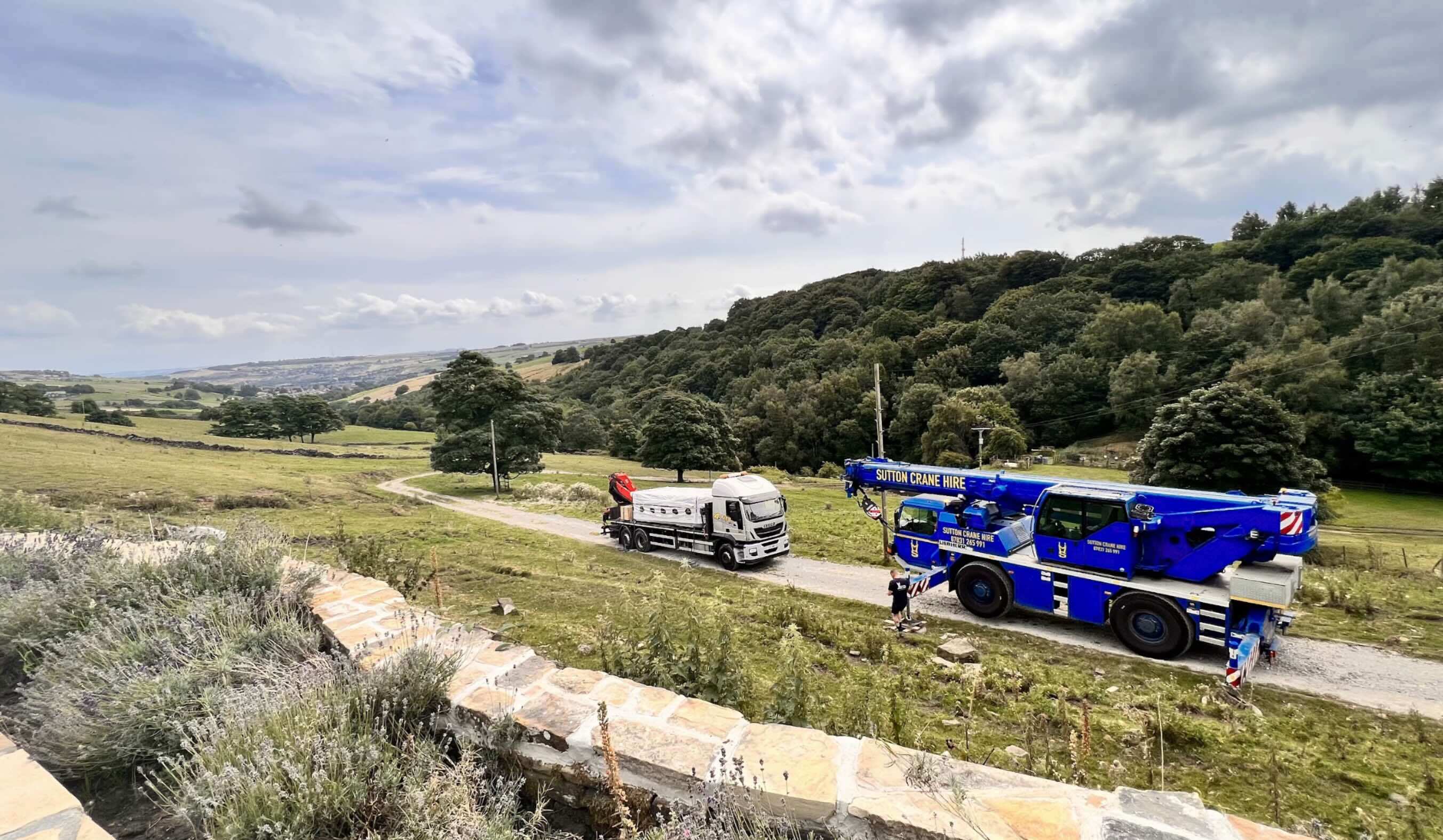January 15, 2023

View Posts By Topics
- Hot Tubs (42)
- Swim Spas (34)
- Maintenance (23)
- Hydrotherapy (12)
- purchase advice (12)
- Fitness (11)
- BBQ Cabins (10)
- Tips & Tricks (10)
- Troubleshooting (10)
- Water Chemistry (10)
- Garden Design (9)
- Garden Buildings (6)
- Hospitality (6)
- Hydropool Exclusive (4)
- Recipes (4)
- Science (4)
- Party Planning (3)
- Finance (1)
This article will provide a small introduction to basic water care, our typical Hot Tub Starter Kits that come with a new Hydropool North West Hot Tub (or Swim Spa), and give a brief overview of what each individual item does and how to use it properly.
What's In A Hot Tub Chemical Starter Kit?
Hot tub starter kits can vary, but they will usually include:
-
Sanitiser: Either Chlorine or Bromine as Tablets or Granules.
-
pH Plus
-
pH Minus
-
FoamAway
Each item will have instructions and information printed on the back. We highly recommend reading through each one before use, safety information, dosing rates, and methods of use vary from brand to brand.
Hot Tub Testing Strips
Test strips can look a little daunting at first but, if we strip away all the numbers and charts it becomes a simple game of colour matching.
A typical 3-Way test strip in a starter kit will test for:
-
Sanitiser (Bromine or Chlorine)
-
pH
-
Total Alkalinity or “TA”
Instructions vary for each brand, but generally you’ll take a test strip, dip it in your hot tub water, and swirl around for two seconds. Take it out, hold it flat and level for about 15-20 seconds, and then compare it to the chart on the back of the bottle.
You’ll notice each test has an “OK” section, indicated by two arrows. This is the range of colour you ideally want each test to be. If the boxes are not the right colour, fear not; we’ll take a look at each chemical and the test that they relate to next. For more information on using Test Strips, see our blog post!
Hot Tub Water Treatment After Testing
Once you’ve tested your spa, it should be easy to see what needs treatment. So now we can get to work using our chemicals.
The recommended stages for treatment are:
Total Alkalinity > pH > Sanitiser
If we treat our water in this order, we reduce the amount of chemical we are wasting by going back and forth trying to balance things out.Total alkalinity helps stabilise your pH, and your pH determines how effective your sanitiser works.
Treating Your Hot Tub's Total Alkalinity (TA)
While it is entirely possible to get away without testing and treating TA, it is worth mentioning. A starter kit doesn’t typically come with any TA specific chemicals, and you will need to purchase them additionally.
Total Alkalinity helps your pH. If you’ve been struggling trying to maintain a pH level for a while, this could be the suspect. It acts as a buffer and stabilises your pH level.
TA levels should usually be around 80-120 ppm. Depending on where you live, TA levels out of the tap can vary. Hard water areas usually have high TA, and soft water areas tend to be low.
To reduce your TA levels, you can simply use pH Minus, following the dosing instructions on the back of the bottle.
To increase the TA level, you may have to purchase Total Alkalinity Plus.
Treating Your Hot Tub's pH
Now that we’ve sorted our TA, our test strips should give a more accurate pH, and we should find it a little easier to treat.
Bromine and chlorine work best within a specific pH range. By getting our water within this range we’re not only keeping it clean and safe, but making sure we get the absolute most out of the chemicals we put into the water, saving time and money down the line.
If your water suddenly seems cloudy or discoloured, pH balance is usually the first suspect.
Letting our pH wander too far out of the ideal range for long periods can be bad for the health of a hot tub, causing seals and gaskets to become brittle and leak, stain and damage the acrylic.
While the chemistry is a little complicated, nothing could be more simple when it comes to pH balancing:
If your pH is low, add pH Plus.
If your pH is high, add pH Minus.
The pH of the water will vary over time and with use. Sanitisers like chlorine and bromine are slightly acidic, and will reduce the pH over time, so test regularly.
Hot Tub Sanatisers: Bromine and Chlorine
Whichever sanitiser you’re using, at a very basic level, they work the same way. Both bromine and chlorine are there to keep your hot tub clean and free from bacteria and contaminants. Each has their own pros and cons, and your hot tub supplier will often have a preference on what works best for your area or brand of spa.
Bromine users will want to keep their levels between 2-5 ppm (parts per million), and chlorine users between 3-5 ppm. This is simply the amount of ready and available sanitiser floating around in your water, and you should see these numbers reflected on your test strips, inside the “OK” range.
If your sanitiser levels are low, you risk letting contaminants and bacteria build up, making your hot tub water dirty and unsafe to bathe in.
To increase this with chlorine or bromine granules follow dosing rates per litres on the back of your sanitiser. Once you’ve dosed your hot tub it’s always worth running your jets, with the cover open to allow any off-gassing and avoid damage to your spa.
Using tablets, check to ensure you have at least one tablet in your float or dispenser, you should then find a small window on your dispenser that you can open and close, essentially choosing how much sanitiser to dispense into your spa.
If your levels get too high, your water can become irritating to the eyes and skin, overpowering, and in time can damage your hot tub and cover, and eventually the acrylic and seals.
Provided the levels aren’t extremely high, simply using the spa will reduce the sanitiser levels over time. Alternatively, you can top the spa up with a little bit of fresh water to dilute, drain some water off and refill, or purchase a Chlorine/Bromine reducer, which can be added to the spa like any other chemical.
FoamAway
We’d always recommend rinsing off in the shower before you use your spa and, if you can, wash your swimwear with water only. Skin Creams, shampoos, conditioners, and laundry detergents are bad news for a hot tub. They can wreak havoc on your water chemistry, and cause foam in your hot tub.
While it’s a situation best avoided, FoamAway can help. A tiny amount will help break the surface tension of bubbles, turning it into an oily film on your water's surface, which will then be captured by your filter. Give your filter a deep clean after this, to avoid recurring issues.
Additional Hot Tub Chemicals
If you’re looking to expand your water care arsenal, there’s a lot of stuff out there, but we’d recommend a few things for the budding hot tub enthusiast:
Non-Chlorine Shock: An oxidising chemical that “shock treats” your spa. Oxidising the water can help with clarity and freshness of your water. The process of shocking the water also helps free used-up sanitiser in your spa, which can help if you find yourself constantly adding bromine or chlorine.
Instant Filter Cleaner: A fast acting spray to help deep clean your filter. Spray on, leave to soak for 15 minutes, and then rinse it off. Recommended at least once a month to prolong the life of your filter. Speaking of which..
A Spare Filter: Life with a hot tub is so much easier with a spare filter. Take the dirty one out, put the clean one straight in, and you’re up and running again. Give the dirty one a good clean and leave it to dry for a week. Repeat. Your filters are rated to last around a year, but only if you care for them as best you can!
Hot Tub Flush: When you are ready to change over your hot tub water, use this first. It will flush your hot tub plumbing of biofilm build up. After using the recommended amount as listed on the bottle, run your jets on high for at least 20 minutes. Empty all the dirty foamy water and then refill with fresh clean water. Don't forget to test and add chemicals.
Final Thoughts On Hot Tub Water Chemistry
-
You should test your water every day. Failing that, test before you use it.
-
Follow all of your chemical safety instructions. Protect your eyes and skin, and never mix dry chemicals together.
-
If you find yourself overwhelmed, take it back to basics: pH and sanitiser. Get them right and you’ve got the most important part down.
-
Take it slow. Solving water care problems can take time. Most water care issues can be solved using all of the above, but it may take a few days to clear up.
-
At the end of the day, if you can’t get the water right, you can always drain your spa and start again.
- If you run into any more issues, check out our troubleshooting blogs, or navigate to the top ten hot tub water issues and fixes blog post.
Subscribe to our blog
Recent Posts

There's nothing quite like sinking into the warm, massaging waters of your Hydropool hot tub after...

Hello from us at Hydropool North West! We’re well known across Greater Manchester as the premier...

At Hydropool North West, we’re Greater Manchester’s premiere source for the finest self-cleaning...

How do you define value? Is it found in the product's benefits that will enhance you or your...



